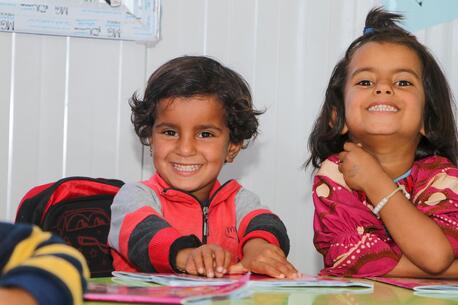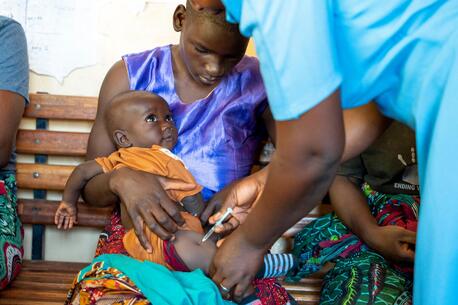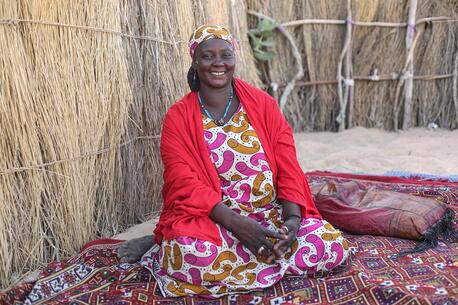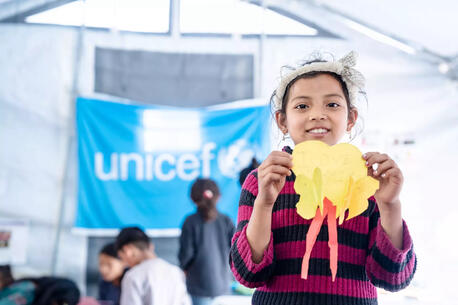
After a Brutal Year, Room for Hope: UNICEF's Impact in 2023
From conflicts to climate change, the past year provided more proof that children's rights are increasingly under threat. In her year-end message to the world, UNICEF Executive Director Catherine Russell reflects on how UNICEF continued to deliver for children and young people in 2023, despite multiple challenges — and what gives her hope for the year ahead.
A new year and new hope for children
With the new year fast approaching, I find myself thinking a lot about the concept of hope — both the power of having it and the despair that can consume us when it is gone.
Hope can drive us forward in the face of seemingly insurmountable challenges. It can be all that stops us from giving in to doubt and insecurity. And on a base level, hope can be the one thing that helps us as human beings to survive against even the longest of odds.
Hope is the foundation on which the organization I lead, UNICEF, has been built. It is the hope that we can create a world in which the rights and well-being of this and future generations of children are protected and upheld. And hope is what fuels our optimism that this mission can be achieved.
We can choose to be courageous. We can choose to make bold commitments and to take decisive actions to keep children safe.
But while hope is tremendously powerful, it can also be fragile, especially when it crashes up against the harshest realities our world has to offer. And this year has been especially brutal for children across the globe.
We estimate, for example, that nearly a quarter of the world’s children are living in or fleeing from conflict zones. This includes protracted conflicts like those in Burkina Faso, the Democratic Republic of the Congo, Ukraine and Yemen, which have unleashed waves of child rights violations and years of suffering.
But 2023 also saw the rise of new conflicts. Violence between armed forces and groups in Sudan has driven at least 6 million people from their homes, more than half of whom are children, making it the largest child displacement crisis globally. Meanwhile, Gaza has become the most dangerous place in the world for children, with nearly 6,000 killed in less than three months of war.
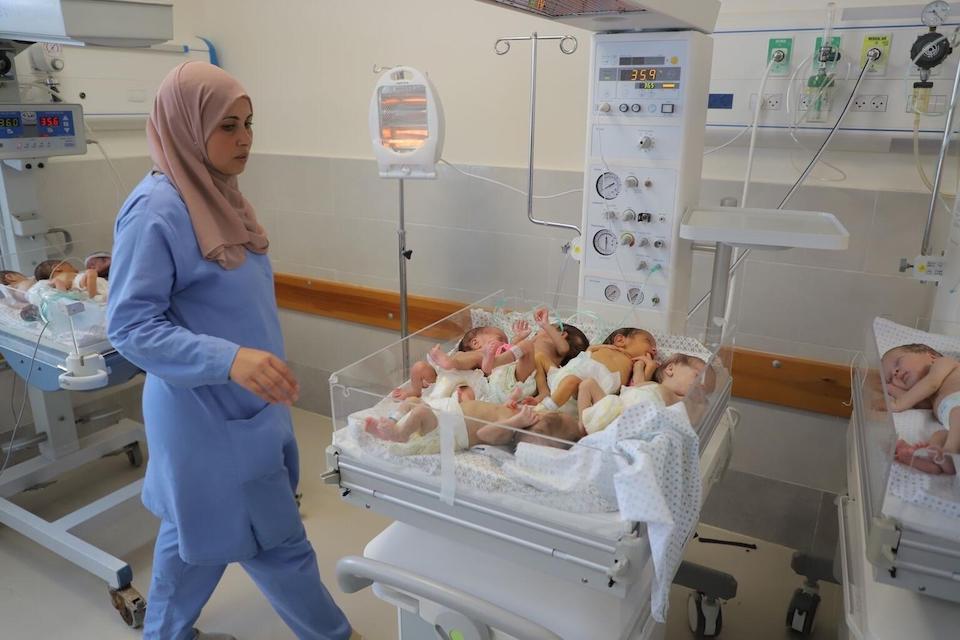
Behind each of these numbers is a story of unimaginable child suffering, of rights violated and rights denied. I have met some of these children during my travels with UNICEF. Children like Fatima, a 16-year-old girl who I visited with recently in a hospital ward in Gaza. She was badly injured when her neighborhood was bombed in October, and the doctors have told her she will never walk again.
The suffering of these children is an indictment of a world that has failed to protect them from the dangers of war.
Making matters worse, in 2023, these new and protracted conflicts have coincided with other devastating crises. These include disasters like the catastrophic flooding in Libya and the earthquakes in Afghanistan and Morocco, disease outbreaks like the cholera epidemic in Haiti and food insecurity such as that experienced in the Horn of Africa. Climate change also continued to wreak havoc on young lives this year by causing severe droughts, heat waves and more intense storms.
Of course, such crises do not occur in a vacuum. Each has the potential to amplify the impacts of the others, exacting ever greater tolls on children and the systems they rely on.
The consequences of this are plain to see:
- the number of children living in multidimensional poverty has increased by 15 percent to 1.2 billion globally in just the past three years
- nearly 600 million children are not meeting minimum reading standards
- 35 million children are suffering from wasting
- each day, nearly 14,000 children under the age of 5 are dying from largely preventable causes like diarrheal diseases and malaria
These are dark times, especially for children, which has left hope in short supply for many of us. But as Dr. Martin Luther King said, “I know, somehow, that only when it is dark enough can you see the stars.”
I believe this to be true. I believe that if we look hard enough, we can see the stars. We can see the signs of hope for children, showing us that we can make the world a better place for them.
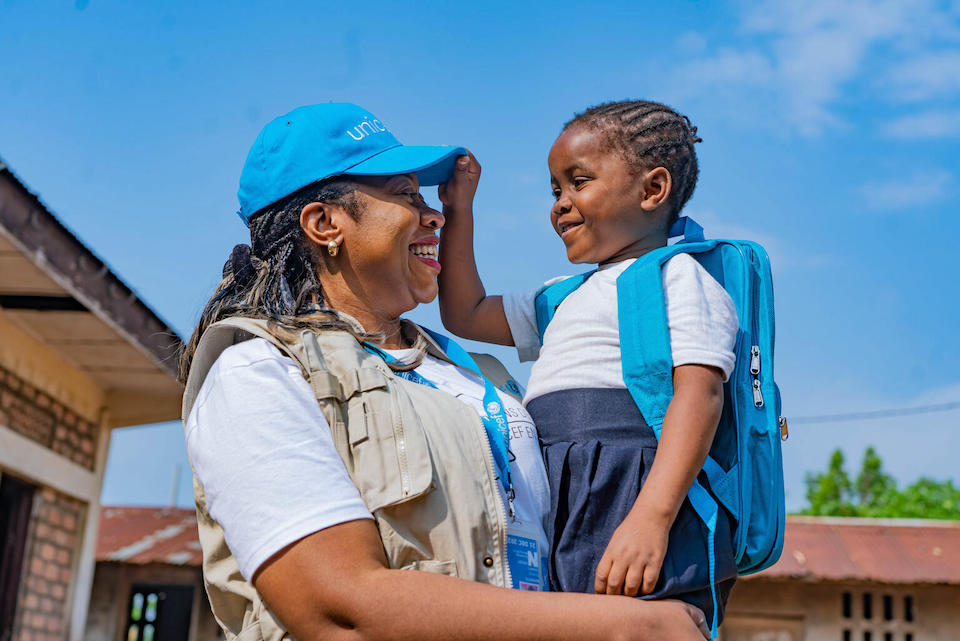
In the last 20 years, for example, we have seen a dramatic reduction in child malnutrition globally. This includes a decrease in the number of stunted children by 55 million, or over one-third.
Child immunization rates, which fell dramatically during the COVID-19 pandemic, have rebounded with global immunization services reaching 4 million more children last year than in 2021. Meanwhile, we have reached the near universalization of children’s access to primary schooling.
And just two weeks ago at COP28 in Dubai, representatives from nearly 200 countries reached a landmark agreement to transition away from fossil fuel consumption. For the first time ever, the COP recognized the unique and disproportionate impacts of climate change on children's health and well-being, proposing an ‘expert dialogue’ on this issue.
UNICEF’s achievements for children in 2023 also give me hope
In humanitarian settings, UNICEF reached more than 23 million people with safe drinking water and vaccinated 27 million children against measles in the past year. UNICEF and our partners also provided more than 150 million children with services for the early detection and treatment of child wasting in high-risk settings.
These results tell me that when we prioritize the rights and well-being of children, there is hope. And they show me that when we focus on reaching the most vulnerable and disadvantaged children – children living in poverty, children affected by conflicts, children with disabilities and girls – we can create better conditions for all children.
Hope is the foundation on which the organization I lead, UNICEF, has been built. It is the hope that we can create a world in which the rights and well-being of this and future generations of children are protected and upheld. And hope is what fuels our optimism that this mission can be achieved.
If this year was any guide, 2024 will not be easy and there will be more challenges ahead. But we can choose to be courageous. We can choose to make bold commitments and take decisive actions to keep children safe. And we can invest more in the systems and services that children need for their healthy growth and development.
I believe that children are the stars shining through in the night sky, and that they are our best hope for creating a better and more peaceful world. Let us be better and do more for them in 2024 and beyond.
Learn more: From Armenia to Ukraine: UNICEF Maps Out Humanitarian Action for Children in 2024
UNICEF works in over 190 countries and territories with a staff of over 17,000, striving to create a more equitable world where every child is healthy, educated, protected and respected. Learn more about what UNICEF does and where UNICEF works.
Your contribution can help make a difference. Donate today.
